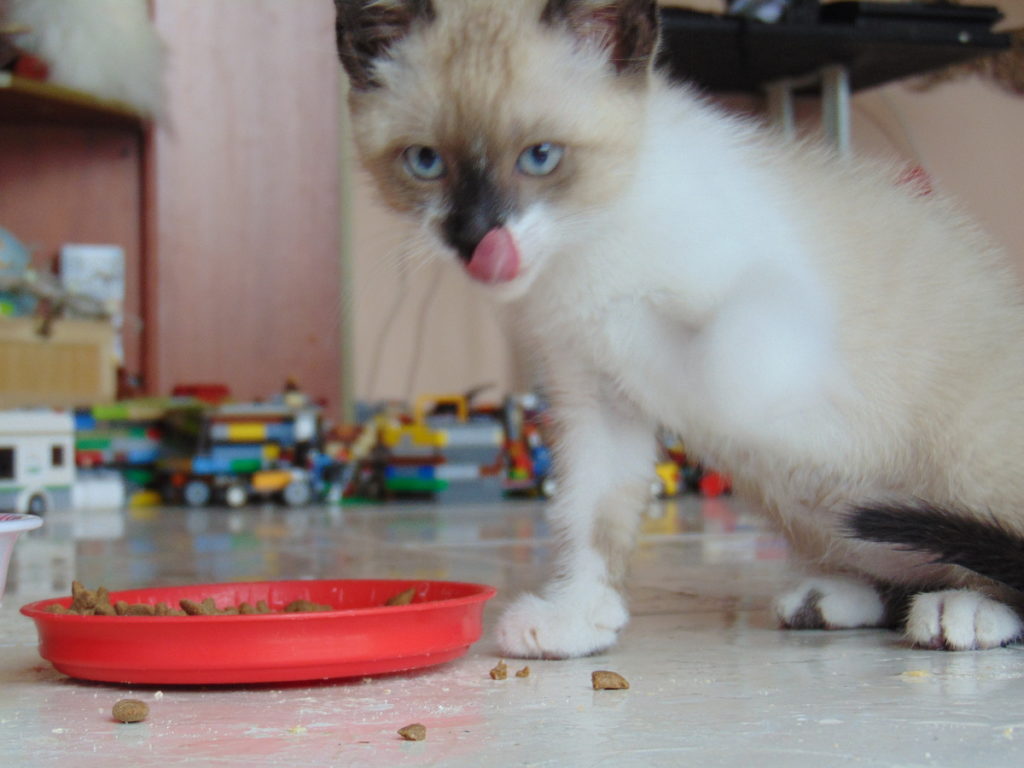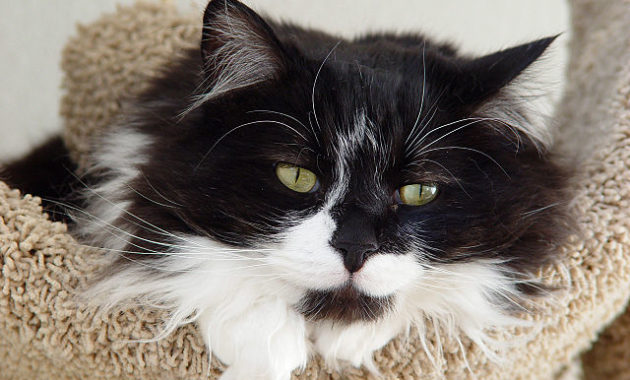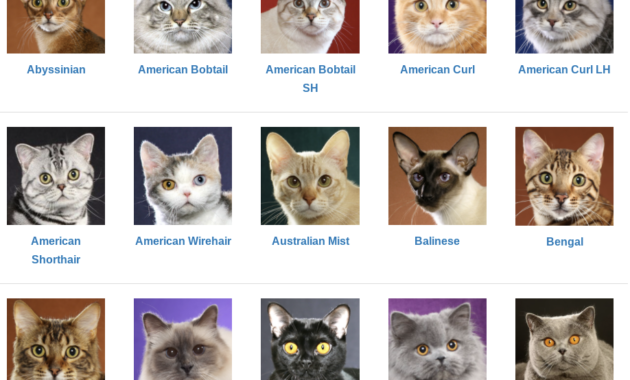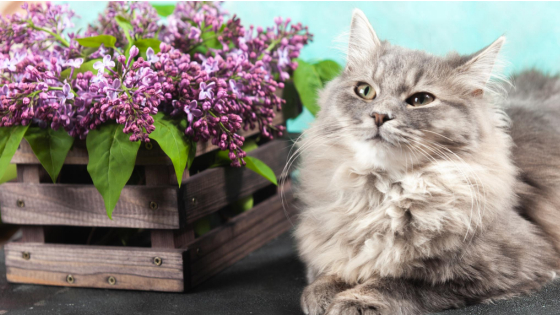Understanding why cats spray can be a perplexing challenge for many pet owners. The behavior goes beyond mere urination issues, delving into the complex world of feline communication and territorial instincts.
By uncovering the underlying reasons behind this behavior, cat owners can not only address the immediate issue but also foster a deeper bond with their feline companions.
In this discussion, we will explore effective strategies to manage and prevent cat spraying, offering valuable insights into your cat's world and how to navigate it with care.
Key Takeaways
- Understand cat spraying as a natural behavior for territory marking.
- Use enzymatic cleaners promptly to eliminate odors and prevent respraying.
- Provide environmental enrichment and address medical issues to prevent spraying.
- Seek advice from cat behaviorists for personalized guidance in handling spraying behavior.
Understanding Cat Spraying Behavior
In the realm of feline behavior, understanding the nuances of cat spraying is essential for effective management and communication with our beloved pets. Cat spraying is a natural behavior through which cats mark their territory and communicate with other felines. It differs from inappropriate toileting, as it typically involves small amounts of urine on vertical or horizontal surfaces.
Male and female cats can spray, with intact males being more prone to this behavior. Neutering can help reduce spraying tendencies in cats. In cases where spraying becomes a concern, involving cat behaviorists can provide valuable insights into addressing the underlying reasons behind this behavior.
Cleaning Cat Spray Effectively
Efficiently eliminating cat spray requires meticulous cleaning techniques and specialized products to effectively remove the odor and prevent re-marking incidents. When dealing with cat spray, it is crucial to act promptly.
Begin by blotting up as much of the liquid as possible with paper towels. Next, apply an enzymatic cleaner specifically designed to break down the proteins in cat spray, effectively eliminating the odor. Thoroughly saturate the affected area and allow the cleaner to air dry.
Avoid using ammonia-based cleaners, as they can exacerbate the scent and encourage re-spraying. Additionally, wash any items that have been soiled in a washing machine with an enzymatic detergent to ensure complete removal of the odor.
Regularly cleaning and maintaining a clean environment can discourage further spraying behavior.
Handling Severe Cat Spray Stains
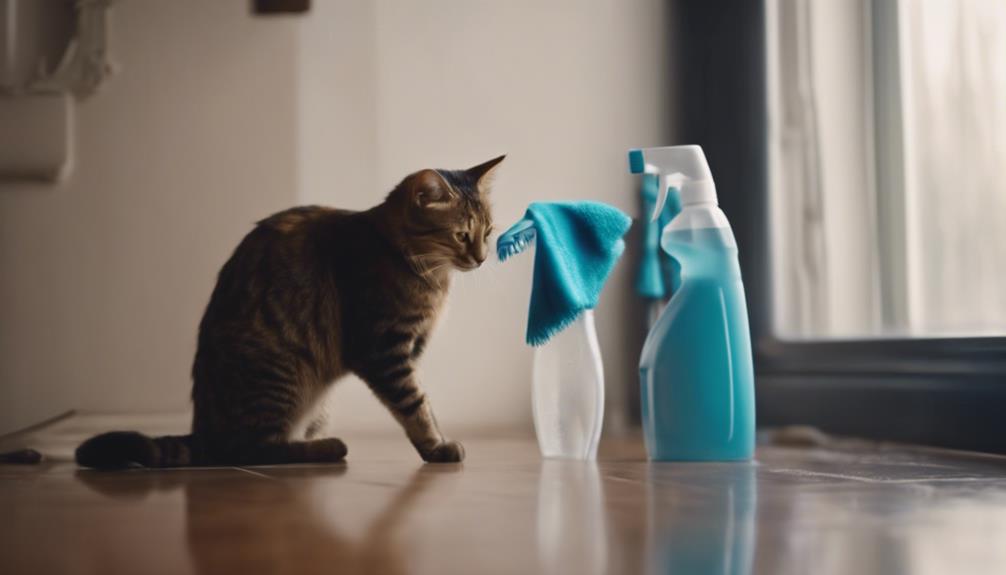
When faced with severe cat spray stains, thorough and specialized cleaning techniques are essential for effective odor removal and prevention of re-marking incidents.
To handle severe cat spray stains effectively, consider the following:
- Use enzymatic cleaners designed to break down the proteins in cat spray.
- Allow the cleaner to sit on the affected area for the recommended time to ensure thorough penetration.
- Blot the area with clean towels or paper towels to absorb excess moisture and cleaner.
- Consider using a black light to identify all affected areas for comprehensive cleaning and treatment.
Differentiating Cat Spray From Urine
Understanding the distinction between cat spray and urine is crucial for effectively addressing feline behavior issues and maintaining a clean living environment.
Cat spray, often referred to as marking behavior, is a form of communication where cats release small amounts of urine mixed with pheromones onto surfaces. Unlike regular urination, which cats typically do in their litter boxes, spraying is done on vertical surfaces to mark territory or attract mates. Cat spray tends to have a stronger odor and may contain pheromones that signal information to other cats.
Recognizing these differences can help cat owners identify the root cause of the behavior and take appropriate steps to address it, such as seeking advice from a veterinarian or behaviorist.
Importance of Enzymatic Cleaners
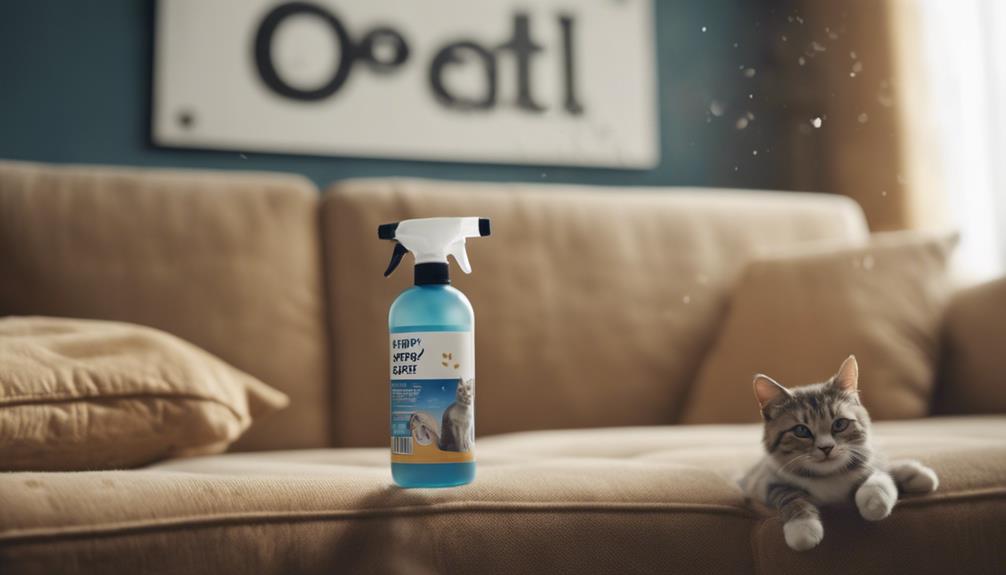
The utilization of enzymatic cleaners is crucial for effectively eliminating and neutralizing the lingering odors associated with cat spray. Enzymatic cleaners work by breaking down the organic compounds in the spray, rather than just masking the smell, making them highly effective in combating cat spraying incidents. Here are some key reasons why enzymatic cleaners are essential:
- Complete Odor Removal: Enzymatic cleaners penetrate deep into surfaces to eradicate odors at their source.
- Prevents Respraying: By fully removing the scent markers left behind, enzymatic cleaners help prevent cats from respraying in the same spot.
- Safe for Pets: These cleaners are pet-friendly and do not contain harsh chemicals that may be harmful to cats.
- Effective Stain Removal: Enzymatic cleaners not only eliminate odors but also help in removing stains caused by cat spray.
Preventing Cat Spraying Incidents
Enzymatic cleaners play a critical role in preventing cat spraying incidents by effectively eliminating odors and discouraging respraying behavior. These cleaners break down the proteins in cat urine, which helps remove the scent that may attract cats back to spray in the same spot. In addition to using enzymatic cleaners, there are other strategies to prevent cat spraying. Providing enough litter boxes in different locations, ensuring a clean litter box, and addressing any underlying medical issues are essential steps. Moreover, offering environmental enrichment, such as interactive toys and scratching posts, can help reduce stress and prevent spraying. By combining these preventive measures, cat owners can create a more conducive environment that discourages spraying behavior.
| Preventive Measures | Description | Benefits |
|---|---|---|
| Use of Enzymatic Cleaners | Break down urine proteins for odor removal | Discourages respraying behavior |
| Multiple Litter Boxes | Provide options in various locations | Reduces competition and stress |
| Environmental Enrichment | Interactive toys and scratching posts | Reduces boredom and territorial issues |
Addressing Indoor Cats' Needs

Addressing the needs of indoor cats is essential for maintaining their physical and mental well-being in a confined environment.
- Regular play and exercise opportunities to prevent boredom and pent-up energy.
- Providing vertical spaces like cat trees or shelves for climbing and perching.
- Access to scratching posts or pads to satisfy their natural scratching instinct.
- Creating hiding spots or cozy areas for privacy and security.
Using Enrichment Tools for Cats
Utilizing interactive toys and puzzle feeders can greatly enhance the mental stimulation and overall well-being of indoor cats. These enrichment tools provide opportunities for exercise, mental engagement, and mimic natural hunting behaviors. Interactive toys can keep cats entertained and prevent boredom, reducing the likelihood of destructive behaviors like spraying. Puzzle feeders offer mental stimulation as cats work to access their food, promoting slower eating and reducing overeating. Providing a variety of enrichment tools can cater to different preferences and keep cats engaged throughout the day.
| Enrichment Tools | Benefits | Examples |
|---|---|---|
| Interactive Toys | Mental stimulation | Feather wands |
| Exercise | Laser pointers | |
| Puzzle Feeders | Slower eating | Food dispensing toys |
| Reduction of overeating | Treat puzzles |
Training Cats for Behavior Modification
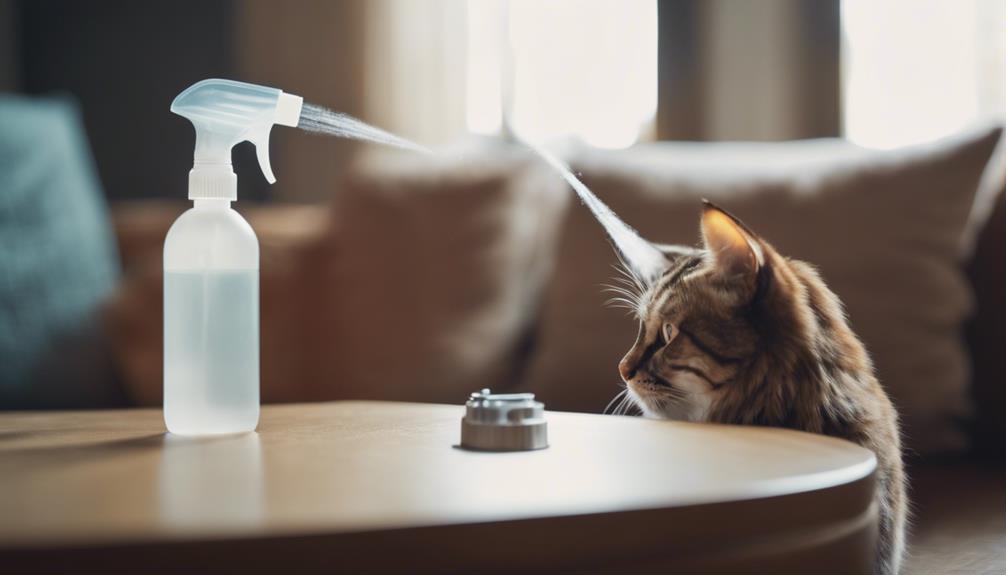
Training methods play a crucial role in modifying problematic behaviors exhibited by cats. When it comes to training cats for behavior modification, there are several effective strategies to consider:
- Positive Reinforcement: Rewarding desired behaviors to encourage repetition.
- Clicker Training: Using a clicker to mark desired behaviors for easier reinforcement.
- Environmental Changes: Modifying the cat's surroundings to discourage unwanted behaviors.
- Consistency: Maintaining a consistent training routine to effectively address behavioral issues.
Additional Resources for Cat Owners
Cat owners can benefit greatly from accessing a variety of supplementary resources tailored to address various aspects of feline care and behavior. These resources include online forums and communities where cat owners can seek advice from experienced individuals facing similar issues.
Books and articles written by reputable veterinarians and animal behaviorists offer valuable insights into understanding and managing cat spraying behavior. Additionally, consulting with professional cat behaviorists can provide personalized guidance and support in addressing specific spraying concerns.
Local animal shelters and rescue organizations may also offer workshops or seminars on cat behavior and care, providing cat owners with hands-on knowledge and practical solutions to manage spraying effectively.
Conclusion
In conclusion, understanding and addressing cat spraying behavior is crucial for maintaining a harmonious relationship with your feline companion. As the saying goes, 'an ounce of prevention is worth a pound of cure.'
By implementing proactive measures such as cleaning effectively, using enzymatic cleaners, and providing environmental enrichments, cat owners can effectively manage and redirect spraying tendencies in their cats.
Stay informed and proactive to ensure a happy and healthy environment for both you and your beloved pet.

